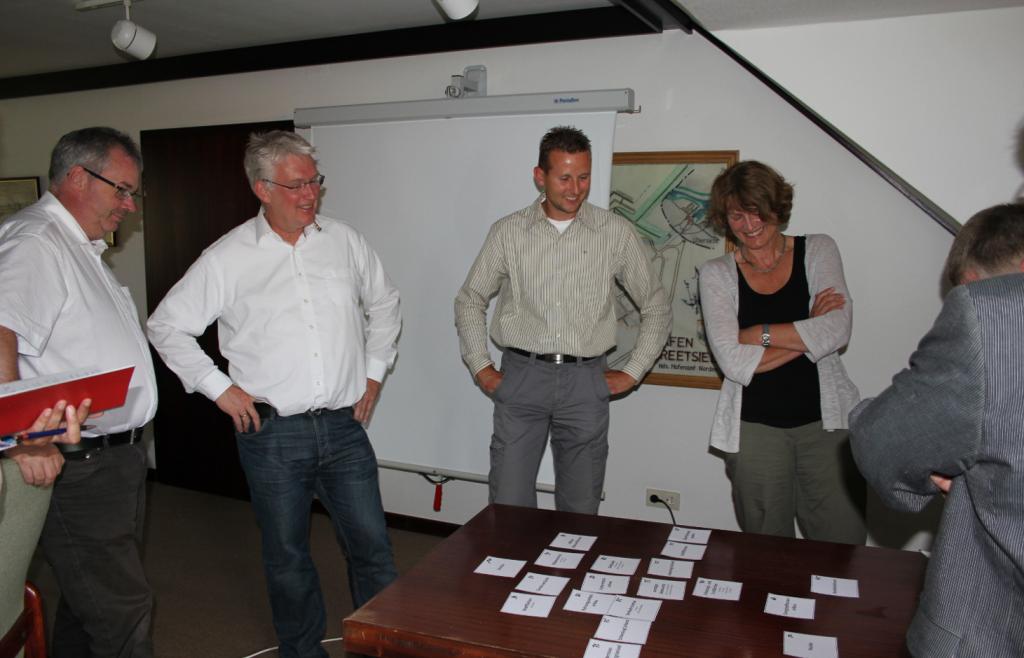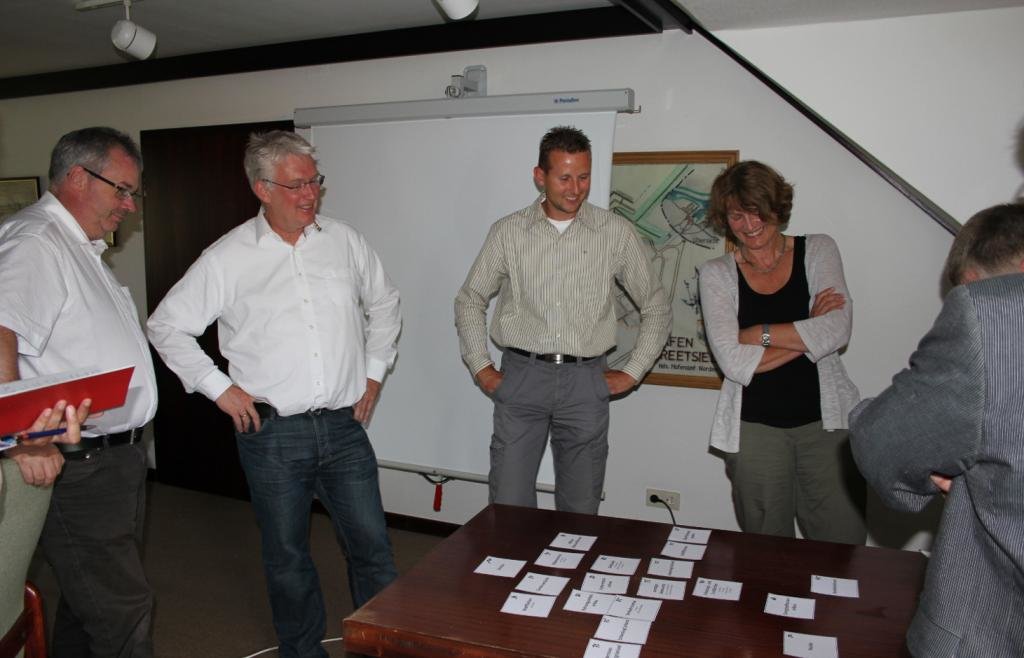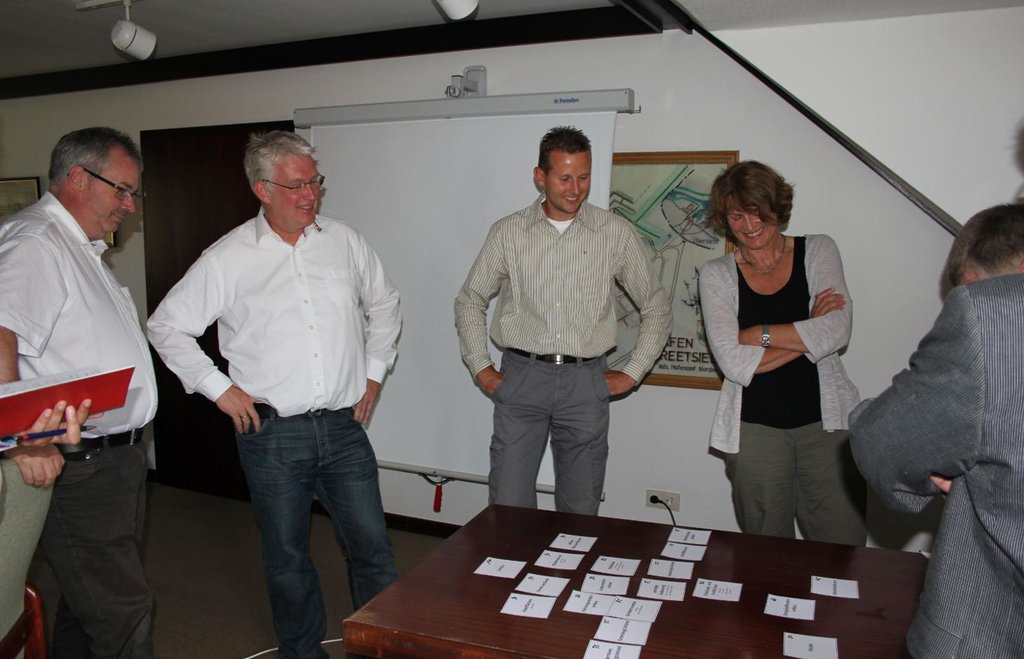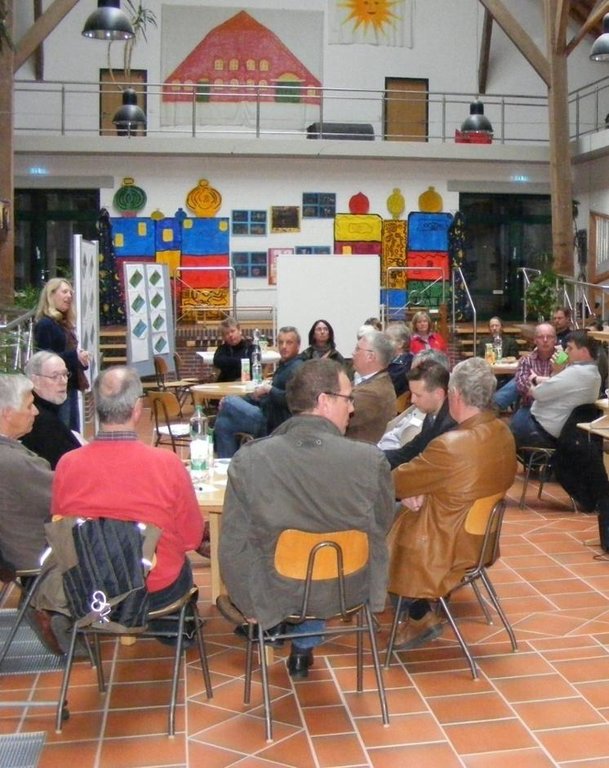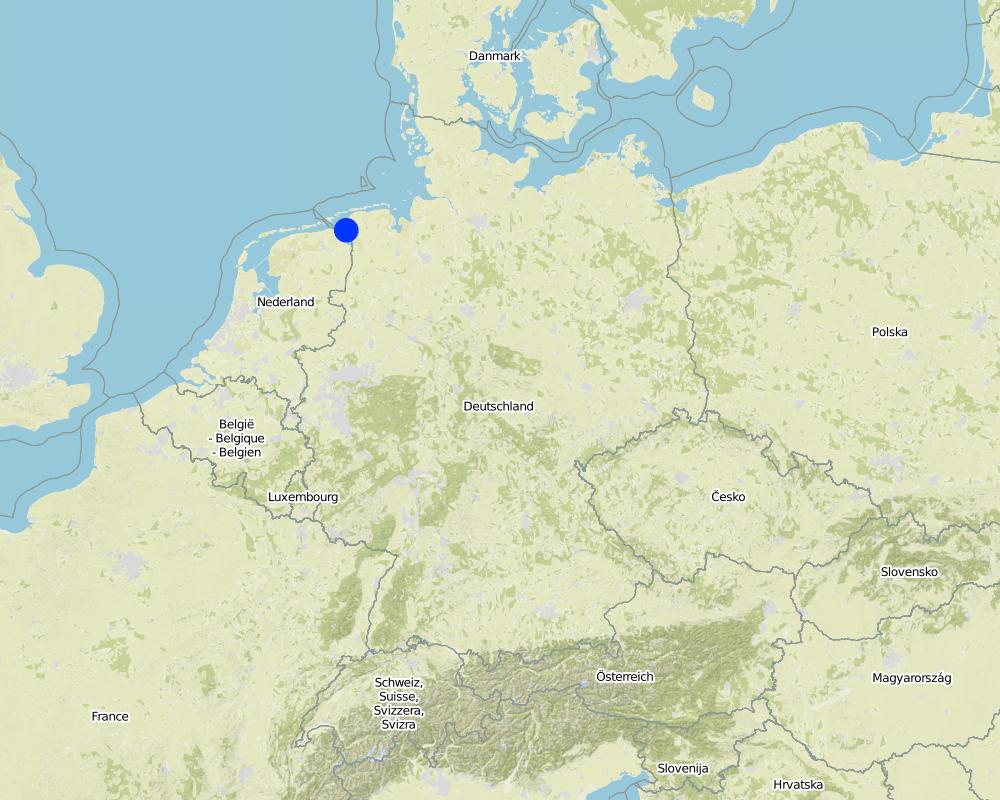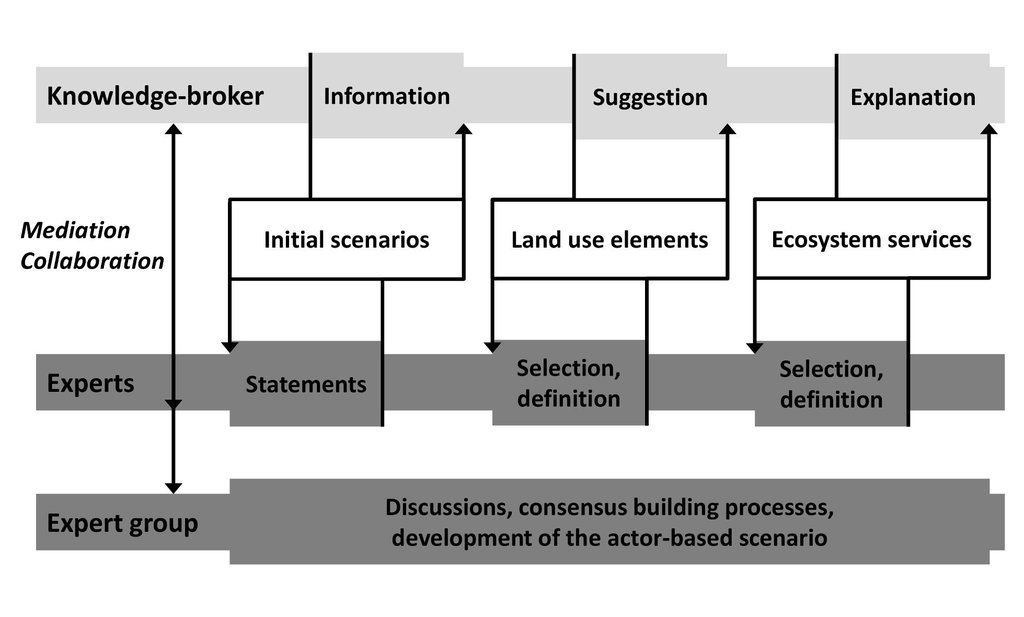Stakeholder participation in integrated assessment and planning of vulnerable coastal regions [Allemagne]
- Création :
- Mise à jour :
- Compilateur : Martin Maier
- Rédacteur : –
- Examinateur : Fabian Ottiger
Stakeholder Partizipation und integrative Entscheidungshilfen für gefährdete Küstenregionen (deutsch)
approaches_2597 - Allemagne
Voir les sections
Développer tout Réduire tout1. Informations générales
1.2 Coordonnées des personnes-ressources et des institutions impliquées dans l'évaluation et la documentation de l'Approche
Spécialiste GDT:
Karrasch Lena
leena.karrasch@uni-oldenburg.de
University of Oldenburg
D-26111, Oldenburg
Allemagne
Nom du projet qui a facilité la documentation/ l'évaluation de l'Approche (si pertinent)
Sustainable Coastal Land Management (COMTESS / GLUES)Nom du ou des institutions qui ont facilité la documentation/ l'évaluation de l'Approche (si pertinent)
University of Oldenburg (University of Oldenburg) - Allemagne1.3 Conditions relatives à l'utilisation par WOCAT des données documentées
Quand les données ont-elles été compilées (sur le terrain)?
10/03/2015
Le compilateur et la(les) personne(s) ressource(s) acceptent les conditions relatives à l'utilisation par WOCAT des données documentées:
Oui
1.4 Références au(x) questionnaire(s) sur les Technologies de GDT
2. Description de l'Approche de GDT
2.1 Courte description de l'Approche
Stakeholders have been involved in integrated assessment to develop action-oriented land use options addressing possible climate change adaptation measures as alternatives to traditional coastal protection strategies.
2.2 Description détaillée de l'Approche
Description détaillée de l'Approche:
Aims / objectives: The SLM approach described here comprises knowledge transfer between the scientific community and practitioners through a “stakeholder-scientist partnership”. The exchange of individual positions, interests and needs concerning spatial planning activities and sustainable land use management was very important. This was also true for the investigation of relationships and interactions between the different stakeholders. Furthermore, a stakeholder-based definition of land use elements and ecosystem services enabled the stakeholders to work with scientific concepts. Land use elements are delineated spatial areas related to one specific use of land, such as arable fields, infrastructure or aquatic areas. Ecosystem services, by definition the benefits people obtain from ecosystems, include provisioning, regulation, cultural and supporting services. The assessment of stakeholder preferences concerning each land use element and ecosystem service allowed an evaluation by scientists and researchers. All suggestions made by the stakeholders are included in the project results.
Methods: In total, there were 38 qualitative interviews carried out about the stakeholders opinion concerning sustainable and adaptive land use management (with one representative from each sector), 14 quantitative interviews to determine the relationship between land use elements and ecosystem services, several telephone and email conversations, 7 focus groups (interviews with more than one representative of each sector), and 4 regional forums (attended by representatives of all sectors). Each participatory process addressed a specific issue, such as determining preferences, relationships or scenario development. These plenaries provided a platform for stakeholder discussions, group assessments and consensus-building processes on the different issues. The focus groups were built to discuss sector-specific issues in greater depth and to support the joint decision-making process. All the results were triangulated and validated.
Role of stakeholders: A heterogeneous expert group including all relevant actors (incl. land users) in the case study region was convened. Fourteen local and regional stakeholders acted as representatives of the various sectors: water management, nature conservation, agriculture, regional and local governmental bodies, and tourism. They covered all relevant fields and levels (from administrative to policy) of decision-making in the community of Krummhörn. The role of the researcher during the participatory governance process is characterised as the “knowledge-broker”. The knowledge-broker acted at the interface between research and the stakeholders. The tasks were to provide the context (land use) and detailed information (ecosystem services) and determine decision-alternatives (land management scenarios) enabling and clarifying the freedom of choice. Additionally, the knowledge-broker translated research results to facilitate the dialogue between the different sectors and strengthen collaboration.
2.3 Photos de l'approche
2.5 Pays/ région/ lieux où l'Approche a été appliquée
Pays:
Allemagne
Région/ Etat/ Province:
Germany, Lower Saxony
Autres spécifications du lieu :
County of Aurich, community of Krummhörn
Map
×2.6 Dates de début et de fin de l'Approche
Indiquez l'année de démarrage:
2011
Date (année) de fin de l'Approche (si l'Approche n'est plus appliquée):
2015
2.7 Type d'Approche
- fondé sur un projet/ programme
2.8 Principaux objectifs de l'Approche
The Approach focused mainly on other activities than SLM (Disaster risk reduction, stakeholder engagement)
The aim of the approach is to foster a more sustainable and adaptive future land use management process by including social, ecological and economic impacts of possible developments in the decision-making processes.
The SLM Approach addressed the following problems: Coastal zones with their natural and societal sub-systems are exposed to rapid changes and pressures on resources. Scarcity of space and impacts of climate change are dominant drivers of land use and adaptation management today. The population of vulnerable coastal regions has to deal with these complex problems, and to develop suitable options for land use and adaptation management considering socio-economic and environmental changes and their impacts on the land management, and vice-versa the impact of land management on the socio-economy and the environment. Future land use management needs to focus on the interactions of the entire human-nature system, aiming at more sustainable development while focusing on the benefits that ecosystems provide for people.
2.9 Conditions favorisant ou entravant la mise en œuvre de la(des) Technologie(s) appliquée(s) sous l'Approche
normes et valeurs sociales/ culturelles/ religieuses
- entrave
The stakeholders are concerned that the land their ancestors reclaimed from the sea might be taken back again. Furthermore, the stakeholders feared that current flood protection structures would be endangered by new developments such as water retention areas.
Treatment through the SLM Approach: Provide a platform for direct knowledge exchange between different stakeholders and scientists and joint development of land management options, ensuring active participation in transparent decision-making, and providing positive outcomes for all participants.
disponibilité/ accès aux ressources et services financiers
- entrave
The land used as a retention area is partially available for other land use. High costs for construction and development of retention area.
Treatment through the SLM Approach: Explanation of benefits provided by nature (ecosystem services). Calculation of expected
costs without changes in land management such as increased pumping costs.
cadre institutionnel
- entrave
Disagreement between different sectors.
Treatment through the SLM Approach: Consensus finding through a participatory process.
cadre juridique (régime foncier, droits d'utilisation des terres et de l'eau)
- favorise
No effect of land ownership or water rights on the approach.
3. Participation et rôles des parties prenantes impliquées dans l'Approche
3.1 Parties prenantes impliquées dans l'Approche et rôles
- exploitants locaux des terres / communautés locales
County of Aurich and community of Krummhörn
Agriculture, water management, tourism, nature conservation. There has been no discrimination inside the communities up to now.
- Spécialistes de la GDT/ conseillers agricoles
Project members (scientists)
- chercheurs
- gouvernement local
Waterboard and Dike authorities
Regional planning (county)
- gouvernement national (planificateurs, décideurs)
Major. Most decision makers are male
3.2 Participation des exploitants locaux des terres/ communautés locales aux différentes phases de l'Approche
| Participation des exploitants locaux des terres/ communautés locales | Spécifiez qui était impliqué et décrivez les activités | |
|---|---|---|
| initiation/ motivation | interactive | Stakeholder analysis (snowball-principle) to include all interest groups |
| planification | interactive | Local and regional decision-makers designed an actor-based scenario. They defined relevant land use elements and ecosystem services. The stakeholders ranked the land use elements and ecosystem services according to their preferences. Furthermore, they determined how important one land use element for a certain ecosystem service is. |
| mise en œuvre | interactive | The regional spatial planning authority implements the results from the approach. |
| suivi/ évaluation | aucun | Not yet |
| Research | passive | The stakeholders have been informed about the research results. |
3.3 Diagramme/ organigramme (si disponible)
Description:
Description of the interactions between knowledge-broker (scientist), individual experts (local and regional decision-makers) and the expert group. The initial scenarios prepared by researchers informed the expert about different land use options. The experts gave statements judging the initial scenarios. Based on this feedback the researcher suggested land use elements and explained ecosystem services which have been selected and defined by the experts. These information were used by the expert group to discuss and develop the actor based scenario.
Auteur:
Leena Karrasch (COAST – University of Oldenburg)
3.4 Prises de décision pour la sélection de la Technologie/ des Technologies
Indiquez qui a décidé de la sélection de la Technologie/ des Technologies à mettre en œuvre:
- principalement les spécialistes de la GDT, après consultation des exploitants des terres
Expliquez:
Decisions were made by the stakeholder group. Guided consensus building processes on different land management topics.
Decisions on the method of implementing the SLM Technology were made by mainly by land users supported by SLM specialists. Decisions were made by the stakeholder group. Guided consensus building processes on different land management topics.
4. Soutien technique, renforcement des capacités et gestion des connaissances
4.1 Renforcement des capacités/ formation
Une formation a-t-elle été dispensée aux exploitants des terres/ autres parties prenantes?
Oui
Spécifiez qui a été formé:
- exploitants des terres
- personnels/ conseillers de terrain
- decision maker
Formats de la formation:
- entre agriculteurs (d'exploitants à exploitants)
- zones de démonstration
- réunions publiques
- cours
Formats de la formation:
- knowledge brokerage
Thèmes abordés:
Training focused on possible consequences of climate change.
4.2 Service de conseils
Les exploitants des terres ont-ils accès à un service de conseils?
Oui
Décrivez/ commentez:
Advisory service is very adequate to ensure the continuation of land conservation activities; They are aware of possible adaptation measures, based on scientific information and group consensus building.
4.3 Renforcement des institutions (développement organisationnel)
Des institutions ont elles été mises en place ou renforcées par le biais de l'Approche?
- non
4.4 Suivi et évaluation
Commentaires:
There were no changes in the Approach as a result of monitoring and evaluation: Not relevant
There were no changes in the Technology as a result of monitoring and evaluation
4.5 Recherche
La recherche a-t-elle fait partie intégrante de l’Approche?
Oui
Spécifiez les thèmes:
- sociologie
- économie/ marketing
- écologie
- technologie
Donnez plus de détails et indiquez qui a mené ces recherches:
A transdisciplinary research project worked on providing information and collecting data concerning sociology, economics, ecology and technology. This information was used for the work with the stakeholders, to illustrate possible future scenarios and available land management options with their consequences. The results are shown in technology T_GER003en. Furthermore these results were fed in to models based on climate change and sea level rise scenarios. These models show the effects of the proposed land management on the ecosystem services provided in the region.
Research was carried out both on station and on-farm
5. Financement et soutien matériel externe
5.1 Budget annuel de la composante GDT de l'Approche
Si le budget annuel précis n'est pas connu, indiquez une fourchette:
- 10 000-100 000
Commentez (par ex. principales sources de financement/ principaux bailleurs de fonds):
Approach costs were met by the following donors: government (Federal Ministry of Education and Research BMBF): 100.0%
5.2 Soutiens financiers/ matériels fournis aux exploitants des terres
Les exploitants des terres ont-ils reçu un soutien financier/ matériel pour la mise en œuvre de la Technologie/ des Technologies?
Non
5.3 Subventions pour des intrants spécifiques (incluant la main d'œuvre)
- aucun
Commentaires:
Labour was not rewarded
5.4 Crédits
Des crédits ont-ils été alloués à travers l'Approche pour les activités de GDT?
Non
6. Analyses d'impact et conclusions
6.1 Impacts de l'Approche
Est-ce que l'Approche a aidé les exploitants des terres à mettre en œuvre et entretenir les Technologies de GDT?
- Non
- Oui, un peu
- Oui, modérément
- Oui, beaucoup
Awareness of challenges and understanding related to land use due to climate change was increased and support to design desired future land management was provided. Ideas for more sustainable land management have been spatially implemented in the regional plan.
Est-ce que l'Approche a autonomisé les groupes socialement et économiquement défavorisés?
- Non
- Oui, un peu
- Oui, modérément
- Oui, beaucoup
It may improve the situation of socially and economically disadvantaged groups in future.
Did other land users / projects adopt the Approach?
- Non
- Oui, un peu
- Oui, modérément
- Oui, beaucoup
Regional plan ('Regionales Raumordnungsprogramm') for the county of Aurich adopted the approach to tackle the impact of climate change.
Did the Approach lead to improved livelihoods / human well-being?
- Non
- Oui, un peu
- Oui, modérément
- Oui, beaucoup
It may improve livelihoods in future.
Did the Approach help to alleviate poverty?
- Non
- Oui, un peu
- Oui, modérément
- Oui, beaucoup
Poverty is not the issue addressed by this approach.
6.2 Principale motivation des exploitants des terres pour mettre en œuvre la GDT
- augmenter la production
- augmenter la rentabilité/ bénéfice, rapport coûts-bénéfices
indirect via adapted land use
- conscience environnementale
only environmental consciousness
- améliorer l'esthétique
- well-being and livelihoods improvement
including prevention of damage during extreme events.
- decision support
decision support for decision makers
6.3 Durabilité des activités de l'Approche
Les exploitants des terres peuvent-ils poursuivre ce qui a été mis en œuvre par le biais de l'Approche (sans soutien extérieur)?
- oui
Si oui, décrivez de quelle manière:
It is very likely, that the involved stakeholder meet in future for continuation of the participatory process.
6.4 Points forts/ avantages de l'Approche
| Points forts/ avantages/ possibilités du point de vue de l'exploitant des terres |
|---|
| The work on a common goal improves decision-making processes. |
| Research and scientists provide evidence and scenarios. They translated research results to facilitate the dialogue between the different sectors and strengthen the collaboration. |
| Active participation in transparent decision-making lead to positive outcomes for all participants. Participation is a positive and practical way to overcome controversial issues. |
| Points forts/ avantages/ possibilités du point de vue du compilateur ou d'une autre personne ressource clé |
|---|
| Together with stakeholders of the region, concrete and action oriented adaptive strategies will be developed. |
|
Stakeholder collaboration promotes social learning processes, consideration of different world-views and cooperation and agreements. |
| Stakeholder engagement as important tool for implementing sustainable development and link cross-sectoral interests. |
|
Stakeholders help to identify risks, impacts and values. |
| Stakeholders provide input to planning processes, they are meaningful partners and provide local knowledge. |
6.5 Faiblesses/ inconvénients de l'Approche et moyens de les surmonter
| Faiblesses/ inconvénients/ risques du point de vue de l’exploitant des terres | Comment peuvent-ils être surmontés? |
|---|---|
| Different world-views of different participants. | Sufficient time for interaction and exchange. Be open minded. |
| Time consuming meetings. | Motivation, give feedback, ongoing information process (learning and knowledge exchange). |
|
Scientific concepts are not easy understandable. |
Use of simple language and avoidance of scientific jargon. |
| Faiblesses/ inconvénients/ risques du point de vue du compilateur ou d'une autre personne ressource clé | Comment peuvent-ils être surmontés? |
|---|---|
|
The work with stakeholders is time intensive and challenging. |
Highling the benefits and the time and commitment gained compared to approaches which do not include the stakeholders and what the consequences are. |
| It is difficult to include all different interests. | Make the project interesting for everyone. Elaborate different options depending on the different interest and discuss the output (benefits and trade-offs). |
| Keep all stakeholders together. | Give feedback, ongoing information process. |
| “Subjective” character of research. | Trying to be as objective as possible. |
7. Références et liens
7.1 Méthodes/ sources d'information
- visites de terrain, enquêtes sur le terrain
- interviews/entretiens avec les exploitants des terres
7.2 Références des publications disponibles
Titre, auteur, année, ISBN:
Linking the ecosystem services approach to social preferences and needs in integrated coastal land use management – A planning approach, Leena Karrasch, Thomas Klenke, Johan Woltjer, 2014
Disponible à partir d'où? Coût?
Land Use Policy 38, 522-532; http://www.sciencedirect.com/science/article/pii/S0264837713002718
Liens et modules
Développer tout Réduire toutLiens
Aucun lien
Modules
Aucun module trouvé


